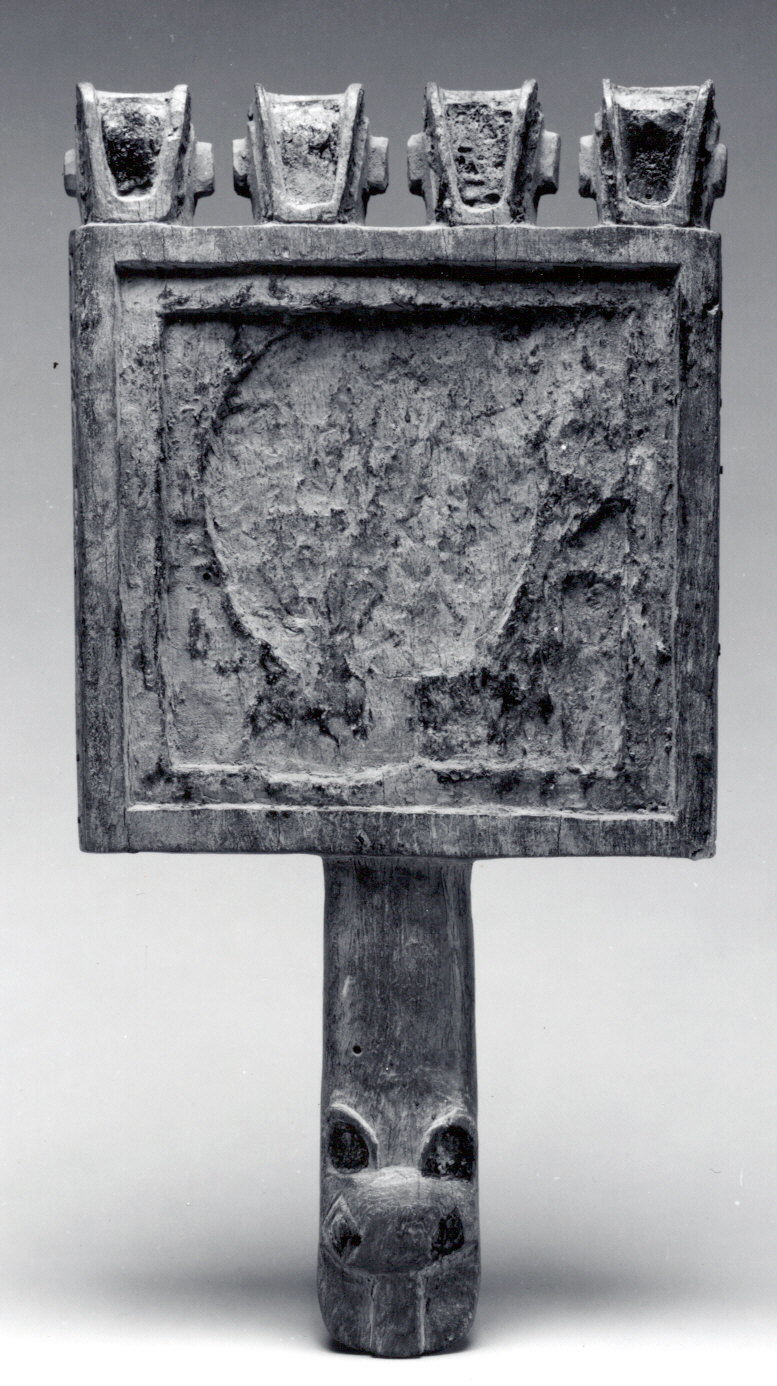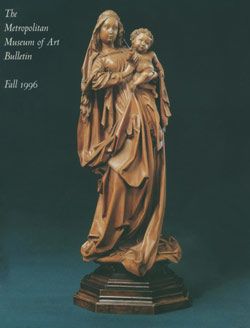Mirror with figure in a reed boat
The imagery and carving style of this mirror frame suggest that it was made by the northern Chimú people when influences from the southern Wari culture were present. Carved from a single piece of fine-grained wood, the square frame shows a profile human figure standing on a balsa raft. The raft is zoomorphic with fanged profile animal heads—possibly mythological—at its prow and stern. The figure, with plumed headdress and a belt/loincloth ending in animal heads, holds a tumi (ceremonial knife) in his right hand and a war club in his left. The split handle of the knife is decorated with the same zoomorphic heads. A puzzling feature is the long L-shaped projection emanating from the figure's mouth below the grotesque extended nose. The boat scene is a frequent theme in Chimú art; it appears on textiles, ceramics, metalwork, and architectural reliefs. It reflects the importance of the sea and maritime activity to the Chimú. The frame was probably once covered with thin sheet gold or silver attached with tiny silver nails, many of which remain.
Four three-dimensional broad-faced heads extend up from the frame. Carved with considerable detail and naturalism, stylistically they relate to the Wari sculpting tradition. The eyes and headbands originally were inlaid possibly with semiprecious stone and/or shell. The back of the frame has a shallow round cavity in the center for the mirror, probably made of pyrite, anthracite, or obsidian. It is now missing.
This image cannot be enlarged, viewed at full screen, or downloaded.
This artwork is meant to be viewed from right to left. Scroll left to view more.




